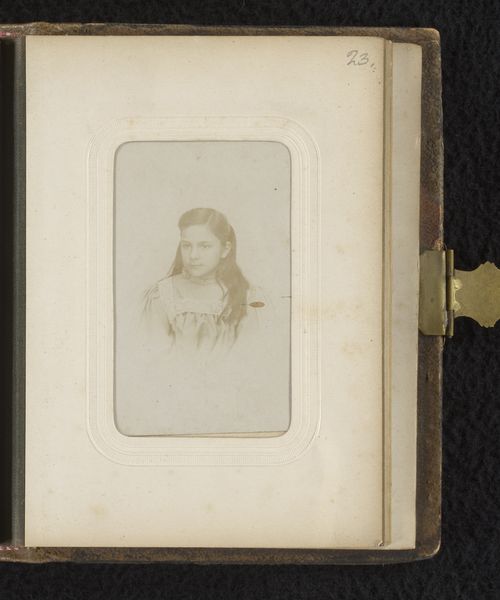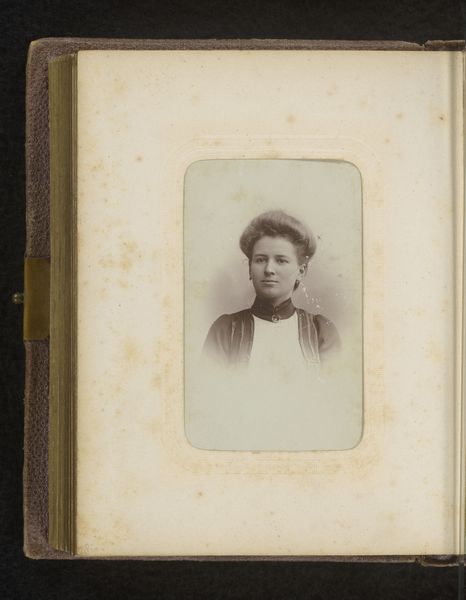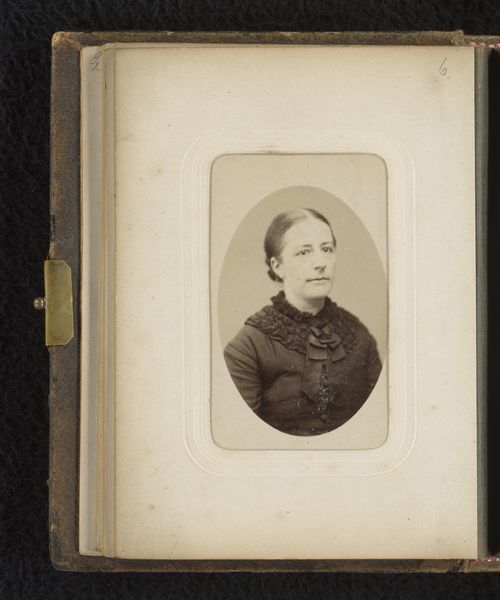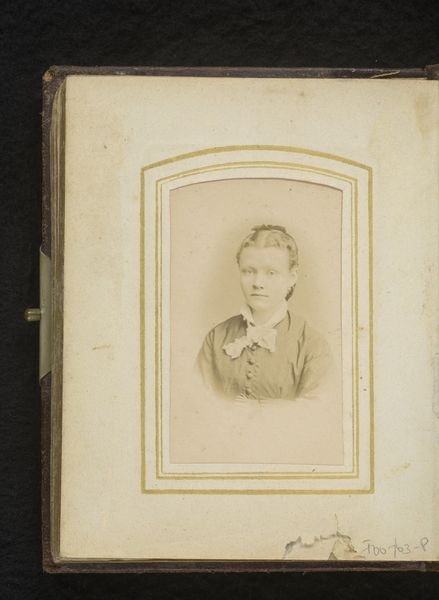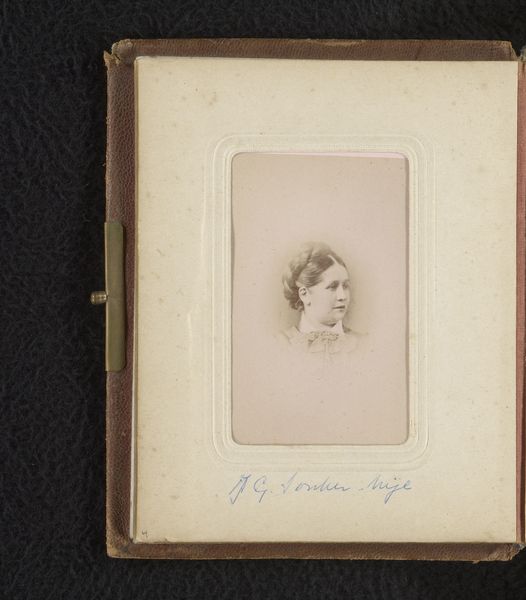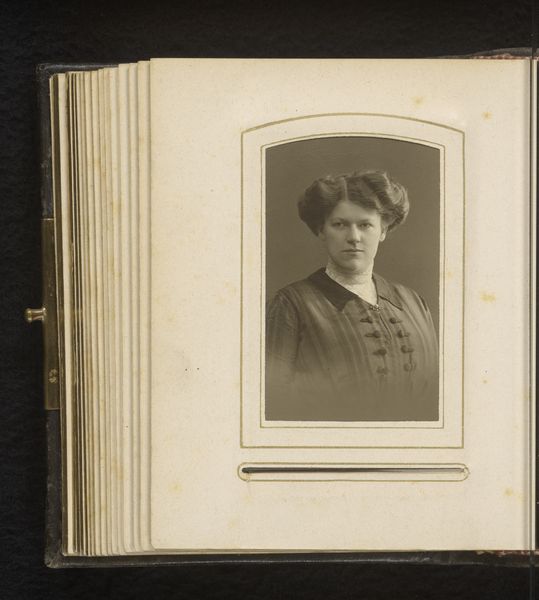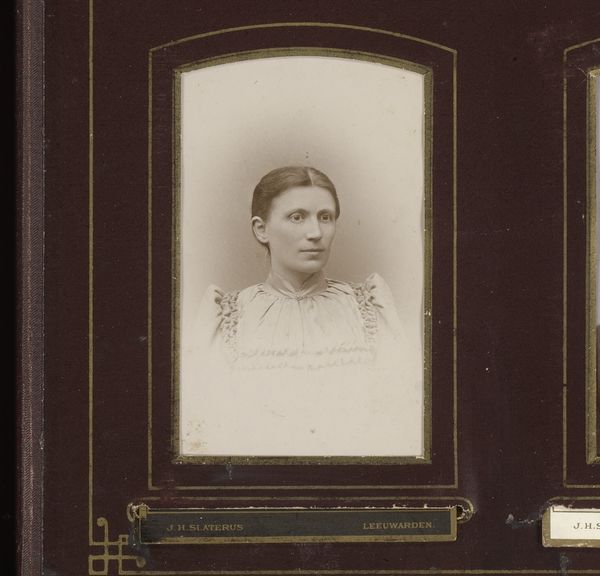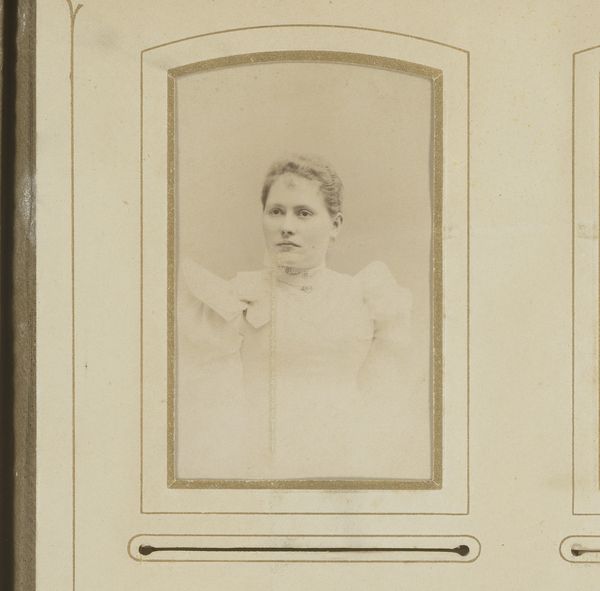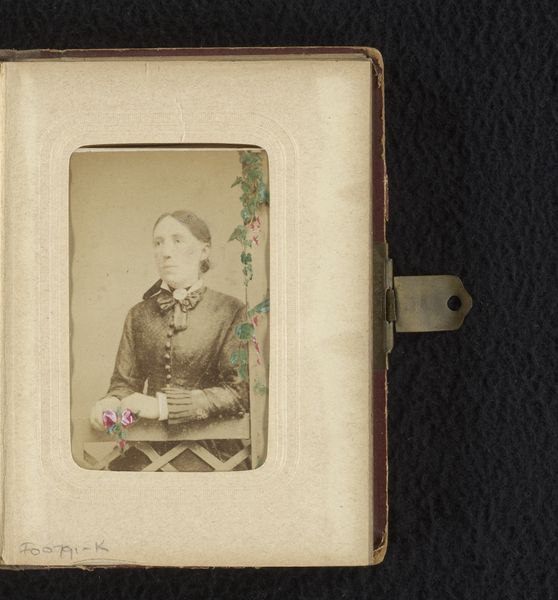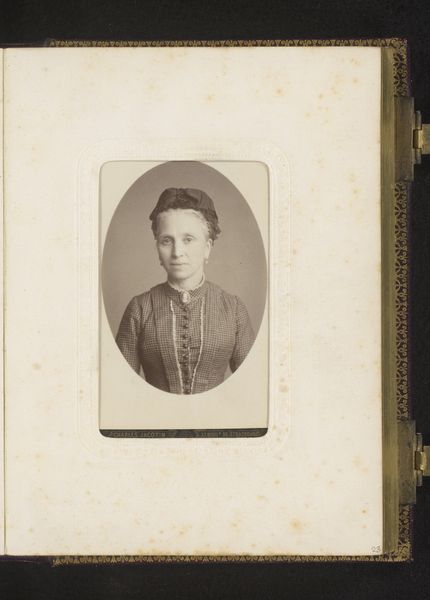
photography, albumen-print
#
portrait
#
photography
#
albumen-print
Dimensions: height 105 mm, width 64 mm
Copyright: Rijks Museum: Open Domain
Curator: The soft sepia tones give this portrait an incredibly intimate feel. Editor: Indeed. This is titled "Portret van een jonge vrouw," placing its creation somewhere between 1860 and 1900. What really captures my attention is the albumen print, and how meticulously such images were made. Each one reflecting hours in the darkroom manipulating materials. Curator: And of course, the labour. We’re speaking about very specific social and material conditions – photographic studios become increasingly commonplace, a mark of growing middle class. Having your image taken, produced and enshrined like this signals new power relations. Editor: Precisely. As portraiture democratized, so did visual representation itself. Who got to be seen, and how, becomes a really loaded question tied to economics and social mobility. Think of the sheer proliferation of photographic images alongside newspapers and the rise of illustrated books – suddenly a lot more people are ‘visible’. Curator: And that visibility came at the cost of immense labor – both of the photographer and assistants processing these images but also, from the subject. The hours she might have worked to be able to afford being immortalized on film. Editor: Absolutely. But going back to the aesthetics for a moment – I'm curious about the stylistic elements, like the rounded framing. How did institutions of art and emerging photographic practices interact in shaping popular aesthetics, in taste? The portrait sits encased within the page which in turn sits within the larger album, highlighting themes of preservation, class and the visual ownership of image and person. Curator: To truly unpack it, you would have to explore the manufacturing process behind these albums and the consumption practices, tracking everything from the materials used to the labour practices employed to get this photo, within this book, to where it sits now. Editor: Ultimately, it brings so much to light regarding the socio-political landscapes of the late 19th century. Curator: For me, understanding that context is key in deciphering her story, the story of that photographic album, and stories that were never shared or had the resources to do so.
Comments
No comments
Be the first to comment and join the conversation on the ultimate creative platform.

